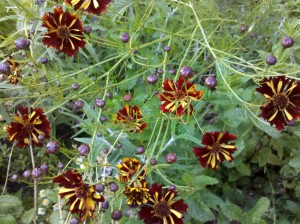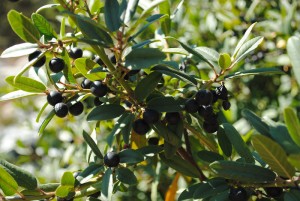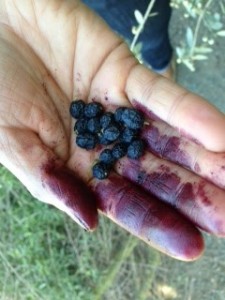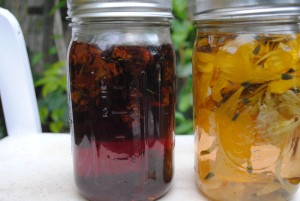Color is something we are primed to see. It’s hard to pass up the eye catching beauty of a ripe fruit hanging in a tree or a blossoming flower hiding in a plant. I began my search for color while working at the UC Botanical Garden at Berkeley, a world class living museum with over 12,000 different kinds of plants. There the docents had created an educational display of plants used traditionally for fibers & dyes. Unfortunately when I joined the Garden in 2006 this exhibit was not on view to the public.
I moved to Berkeley straight from college. I was fascinated by plants and specifically interested in how people use plants for medicine. I was thrilled when I landed a job at the UC Botanical Garden.
I was inspired by the local food movement and was determined to live in the Gourmet Ghetto where I could attend a weekly organic farmer’s market and be in proximity to the iconic Chez Panisse. All was going well with my idyllic California dream plan until I discovered how completely ignorant I was of the clothing industry, fast fashion and the environmental degradation and havoc it was wreaking to humans at all levels. So there I was shopping for pristine peaches while buying clothes made from plastic that pollute our waterways and harm the people involved with its production.
Luckily at that time I was introduced to Sasha Duerr who had recently started the Permacouture Institute. We hit it off and I invited her to the Botanical Garden to take a look at the Fiber & Dye Exhibit and offer suggestions. Together we revived the exhibit and she taught the first of what is now an on-going series of classes in plant based fibers and dyes.
Shortly thereafter I met another pioneer in the movement, Rebecca Burgess, who also became an instructor at the Garden in natural dyes. Through my research and interest and with help from the wealth of knowledge we have in the Bay Area, The Fiber & Dye Exhibit has now been running for 10 consecutive years with classes and workshops held every weekend during the month of March when it is held. It is a bona fide festival! We have expanded our curriculum to include papermaking with plants, printmaking with plant inks, indigo resist dyeing and, a mainstay of our family programming, naturally dyed Easter Eggs. We have new additions and offerings every year. This type of knowledge and investigation belongs in Botanical Gardens so that the link between the plant world and our very basic of needs, clothing, can be demonstrated.
 coreopsis |
 coffeeberry |
Some of my favorite colors I have found along the way are the beautiful purple hues of redwood cones (Sequoia sempervirens) freshly fallen. I made this amazing realization while trying to use the cones in a shibori design I was creating on silk. I tied string around each cone in the fabric and I was preparing to dye the scarf in another bark, which I now cannot even remember. When I put my fabric in the dye pot the redwood cones burst with color and they created the most beautiful color and patterning. I was so excited, but more profoundly, I felt connected to the ancient traditions of wild crafting, discovery, and wonder that can only come with experimentation.
 wild olives |
 natural dyes |
In my humble Berkeley garden Sourgrass (Oxalis pes-caprae) invades every winter, and I have decided to not fight it, but utilize it in my dye work. The bright yellow flowers offer such a fluorescent yellow on cloth that it is hard to find a match anywhere else in the plant world. What is a weed anyway?
My family heritage is South Indian and there I discovered the wonder of pomegranate skins (Punica granatum). The skins are rich in tannins and dye beautiful shade of bronze with a red glimmer. Not much is needed. While you enjoy this gem of a fruit throughout the winter, dry your peels on a piece of newspaper. Once you have enough to dye with (appx. half your weight of fiber). Simmer the peel. Submerge alum mordanted silk and enjoy the beautiful results. I especially love this one on raw silk. What a useful way to use the peel! I am constantly amazed by the abundance of nature and am hopeful that with each and every mindful steward of the plant world there is hope for the future.
There is so much to learn and know when it comes to natural dyes.
Here are the websites for the resources:
www.permacouture.org
www.fibershed.org
www.averbforkeepingwarm.com
www.biohue.com
www.botanicalgarden.berkeley.edu
and my info can be found on:
www.plantspeople.org